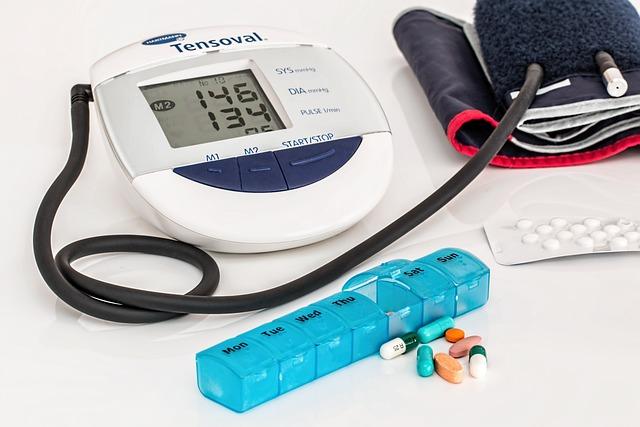In the intricate dance of life, our joints are the unsung heroes, tirelessly working to keep us moving to the rhythm of our daily routines. Yet, as the years pass, these valiant warriors often whisper of weariness, and their quiet murmurs can grow into a chorus of discomfort. Joint pain, a common but unwelcome companion, can turn even the simplest tasks into daunting challenges, threatening to steal the joy from our everyday adventures. But take heart, for you are not alone on this journey. This guide is your compassionate companion, offering practical wisdom and gentle encouragement to help you reduce joint pain and reclaim your mobility. Together, let’s explore a path to renewed freedom, where each step is a testament to resilience and hope.
Gentle Movements: Embrace Exercises that Soothe Your Joints
Imagine a world where each step feels lighter, and every stretch brings a sense of relief rather than discomfort. Embracing exercises that are kind to your joints can transform this vision into reality. Gentle movements, often inspired by practices like Tai Chi and Yoga, focus on fluidity and balance, offering a sanctuary for your body to heal and thrive. These exercises prioritize slow, deliberate motions that help increase flexibility, reduce stiffness, and promote circulation without overstraining your joints.
Consider incorporating activities that are both calming and restorative into your routine. Some options include:
- Swimming or Water Aerobics: The buoyancy of water supports your body, easing the pressure on your joints while allowing you to build strength.
- Pilates: With its focus on core stability and controlled movements, Pilates can enhance your posture and improve joint alignment.
- Walking: A simple yet effective way to maintain mobility, especially when done on even surfaces or in nature to maximize mental relaxation.
These activities not only nurture your physical well-being but also encourage mindfulness, helping you stay connected to your body’s needs and capabilities. As you integrate these gentle movements into your life, you’ll likely find that they become a cherished part of your self-care routine, offering a path to both comfort and strength.

Nourishing Your Body: Dietary Choices for Joint Health
Embracing a diet that supports joint health can be a game-changer in maintaining mobility and reducing discomfort. Incorporate foods rich in omega-3 fatty acids, such as salmon, walnuts, and flaxseeds, which help to reduce inflammation. Additionally, make sure to include a variety of colorful fruits and vegetables. These are packed with antioxidants that combat oxidative stress, a known contributor to joint pain.
Consider adding the following to your daily meals:
- Leafy greens: Spinach, kale, and broccoli are rich in vitamins C and K, which support cartilage health.
- Whole grains: Opt for quinoa, brown rice, or oats to provide fiber and maintain a healthy weight, reducing strain on your joints.
- Spices and herbs: Turmeric and ginger are renowned for their anti-inflammatory properties.
Remember, staying hydrated is equally crucial. Water aids in maintaining the lubrication of your joints, ensuring smooth and pain-free movement. By making these thoughtful dietary choices, you’re not only nourishing your body but also paving the way for a more active, pain-free lifestyle.

Harnessing the Power of Mindfulness to Alleviate Pain
Incorporating mindfulness into your daily routine can be a transformative approach to managing joint discomfort. By focusing on the present moment, mindfulness can help shift your attention away from pain and towards a more serene state of mind. This practice encourages you to observe your thoughts and sensations without judgment, creating a mental space that can reduce stress and, consequently, the perception of pain. Consider integrating these simple yet effective mindfulness techniques into your life:
- Body Scan Meditation: Dedicate a few minutes each day to mentally scan your body from head to toe, acknowledging areas of tension and discomfort, and consciously relaxing those muscles.
- Mindful Breathing: Focus on your breath, inhaling deeply and exhaling slowly, allowing each breath to bring a sense of calm and release to your joints.
- Gentle Yoga or Tai Chi: Engage in low-impact exercises that incorporate mindfulness, helping to improve mobility while fostering a deeper connection between mind and body.
Embracing mindfulness is not about eliminating pain altogether, but rather about changing your relationship with it. This empathetic approach empowers you to live more fully and actively, even in the presence of joint pain.

Comfort in Daily Life: Ergonomic Adjustments for Easier Movement
Embracing ergonomic adjustments in your everyday routine can significantly enhance your comfort and mobility. Begin by evaluating your workspace: ensure your chair supports your lumbar region, and your feet rest flat on the floor. Consider using a footrest if necessary. A keyboard and mouse positioned at the right height can alleviate strain on your wrists and shoulders, promoting a natural posture.
Incorporate these small changes into your daily life:
- Invest in ergonomic kitchen tools such as knives with comfortable grips and lightweight pots and pans to ease cooking tasks.
- Opt for shoes with good arch support and cushioning to reduce the impact on your knees and hips during walks.
- Use pillows to support your neck and back while sleeping, ensuring your spine remains aligned.
- Integrate stretching exercises into your routine to maintain flexibility and reduce stiffness.
By making these mindful adjustments, you can create a supportive environment that nurtures your body, helping to alleviate joint pain and enhance mobility throughout your day.


